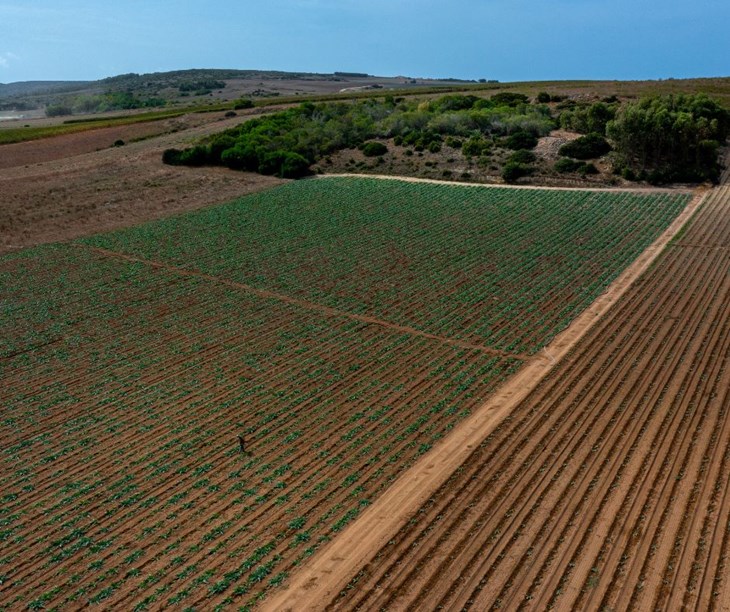4/26/2024
by Ryan Robinson
As we observe Earth Month and consider how to adopt more environmentally conscious behaviors, it is essential to understand the impact of our food purchases. These choices not only influence climate change – due to the high greenhouse gas emissions – but can also affect our water pathways that municipalities rely on for clean water every day.
How factory farming affects water
Pollution from these concentrated animal feeding operations (CAFOs) can harm aquatic life, degrade natural habitats, and can also threaten the health of nearby affected communities. In a 2017 Water Quality Report sent to US Congress, the EPA disclosed that:
- 46% of Rivers and Streams are in poor biological condition
- 21% of the nation's lakes are hypereutrophic (or prone to algal blooms, which will be discussed further)
- 18% of the nation's coastal and Great Lakes waters are in poor biological condition
- 32% of the nation's wetland area is in poor biological condition
- The leading known sources included atmospheric deposition and agricultural activities
CAFO runoff
Traditional CAFO waste management practices can cause a variety of problems. According to a Food & Water Watch analysis of 2022 USDA census data, the United States’ 24,000 factory farms produce an estimated 940 billion pounds of waste annually.

Instead of running through treatment plants, the raw manure sits in massive open pits that collect over time and are later sent through massive sprinkler systems to crop fields as a method of fertilizer dispersal. This fertilizer is often over-applied, leading to phosphorus and nitrogen – elements essential for crop growth – to become pollutants.
Hurricanes and other natural disasters can further exacerbate these manure vats, such as what was observed in North Carolina during Hurricane Florence nearly 6 years ago.
Public health risks
These pollutive runoffs, rich in nitrogen, phosphorus, and other detrimental compounds, are prone to cause Harmful Algal Blooms (HAB), which have been found to cause short and long-term health problems to residents that utilize an affected area, ranging from nausea and headaches to respiratory problems and liver damage depending on the type of organism and toxin that flourishes by region.
In addition to human health, wildlife and commercial operations are also at risk. HABs deplete oxygen in affected waters, causing a massive dead zone depending on the size of the bloom. These cause mass mortality events in fish and other native species, severely limiting fishing supply and further impacting local economies.
The National Centers for Coastal Ocean Science (NCCOS) estimate the economic loss from HABs to be anywhere from $10-$100 million, though it is difficult to quantify HABs on a monetary scale.
Regenerative solutions
While CAFOs present a threat to water quality and human/environmental health, they're only part of a larger problem at hand, such as farming methods that deplete soil health. The NRDC has compiled several studies linking soil health to a reduction in nitrate and phosphorus runoffs, accrediting soil health to regenerative agriculture applications such as cover crop planting and “no-tilling” practices.

One study from the Indiana Watershed Initiative found a 30% - 40% reduction in nitrogen and phosphorus runoffs through planting cover crops alone. Supporting regenerative practices has the potential to greatly improve soil health, reduce topsoil erosion, and reduce water pollution through such innovative systems.
What you can do
While it may seem difficult to change systems on such a large scale, consider that a consumer's voice can greatly impact a company's decision to act.
Food businesses and producers are rapidly adopting regenerative agriculture practices to better align with their environmental, social, and governance agenda. Searching for third-party certification labels like Certified Regenerative by AGW, Regenerative Organic Certified, Land to Market EOV, and Certified Fair Trade by FairTSA is a good way to start.
Compassion in World Farming's Food Business team is currently evaluating the strength of each certification and will publish a matrix this year. If you are more interested in understanding your local water quality, the EPA has developed a “How's my waterway?” tool.
In addition to the EPA, the Socially Responsible Agriculture Project (SRAP) has developed toolkits and resources for individuals interested in directly engaging and supporting their local waterways.
Together, we can strive to improve environmental quality for the lives of humans and animals for decades to come.
Learn more about Compassion in World Farming's Food Business work at https://www.compassioninfoodbusiness.com/.

